Trionic Corporate Partners, LLC News
Understanding Regulatory Buoys
Buoys in general are floating markers that provide information and navigational aid to boaters on the water. Buoys serve as the equivalent of floating road signs, communicating information to all those on and around the water with the goal of safety for all. Buoys come in several categories with specific purposes including mooring buoys, channel marker buoys, and regulatory buoys. Here we explore the latter, and go into depth on what regulatory buoys are, the messages they convey, and how to interpret them.
What is a Regulatory Buoy?
Regulatory buoys are buoys designed to communicate a range of information to boaters, ship captains, and others on and around the water. Through a combination of symbols and words, regulatory buoys can convey warnings, indicate locations, and spell out rules and regulations. Typically, a regulatory buoy is white with orange symbols and bands, and black text. These buoys are approved and universally used by local, state, and federal agencies to ensure water safety. They are appropriate for government and private applications.
Characteristics of a Regulatory Buoy
- White with an orange horizontal band at both top and bottom.
- Black text within or around an orange square, circle, or diamond; or black text outside a diamond with an orange cross.
- Can be buoys or beacons.
- If lit, the light will be white and may have any light rhythm except quick flashing, flashing (2), or Morse code “A.”
- Chart symbol indicating regulatory buoy location:
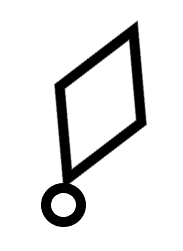
Regulatory Buoy Designs
Regulatory buoy designs can vary depending on the location they are deployed and the conditions that the buoy must operate in over the course of time. The size and shape of the buoys range greatly, particularly with heavy-duty offshore and open water regulatory buoys. For nearshore, inshore, and protected water regulatory buoys, the typical designs are shown below.
Can Buoy
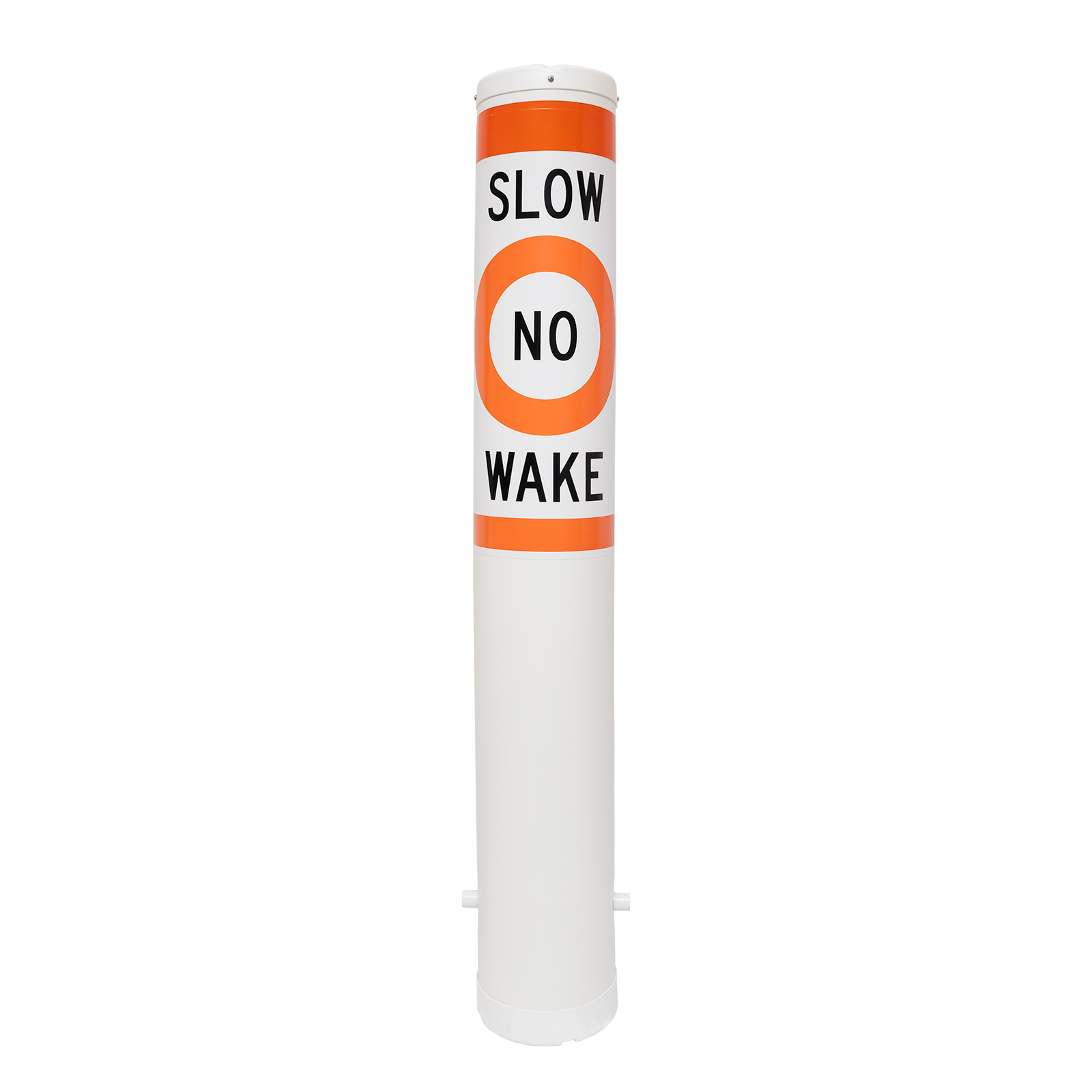
Can Buoy with Collar
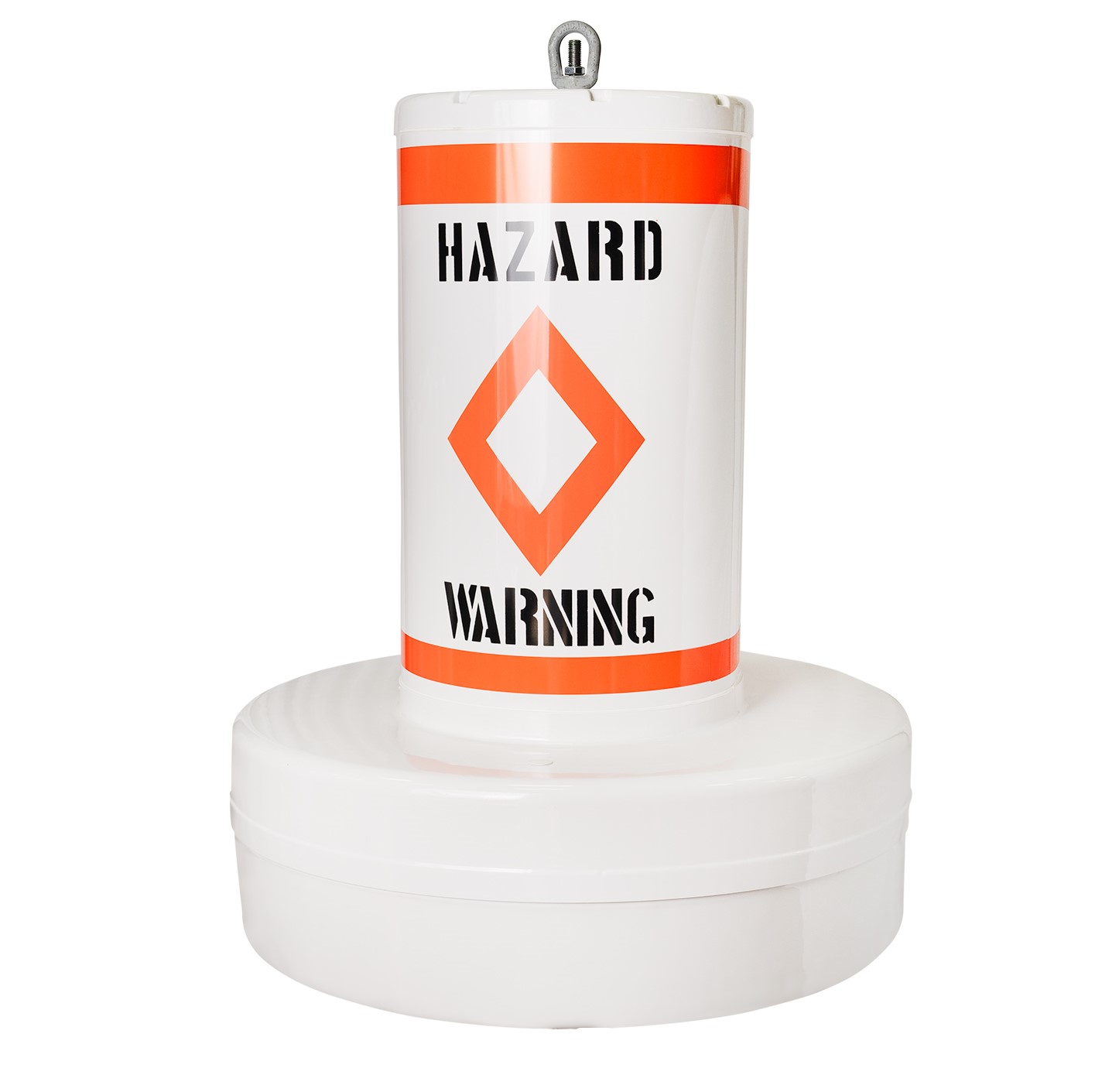
Spar Buoy
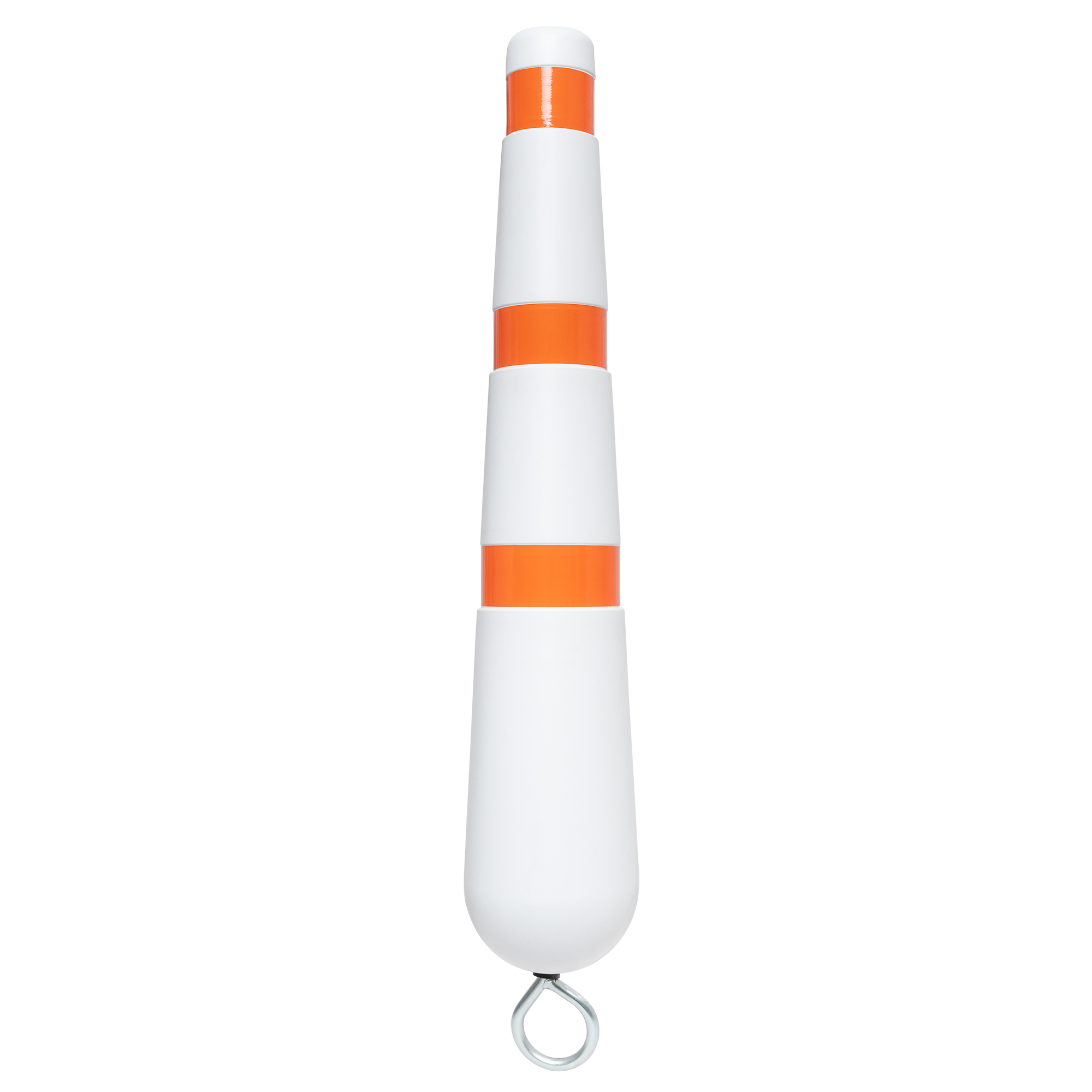
Regulatory Buoy Symbols and Messaging
There are four (4) basic categories of messages conveyed on regulatory buoys in the U.S. The message types are Hazard Warning, Controlled Area, Restricted Area, and Information. The symbols used for each of these types of regulatory messages are shown in the image below.
Regulatory Buoy Symbols
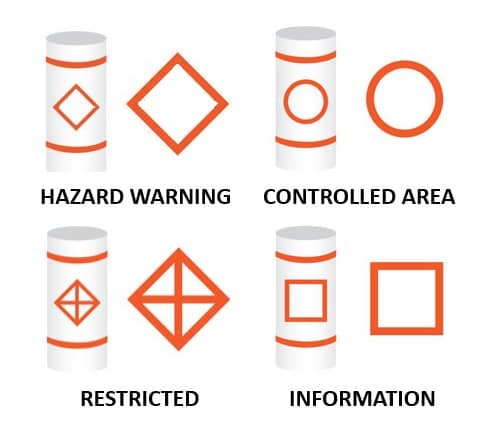
Message Examples
Hazard Warning: ROCK, DANGER, RAPIDS, SHOAL, STUMP, SHALLOW AREA, HAZARD AREA, DANGER DAM
Controlled Area: SLOW 5 MPH, SLOW NO WAKE, SKI AREA, NO SKI, SPEED ZONE, NO WAKE IDLE SPEED
Restricted Area: SWIM AREA, KEEP OUT, NO BOATS, BOATS KEEP OUT, CLOSED AREA, NO BOATING, DANGER DAM
Information: RESTROOM 1 MILE, STATE PARK AHEAD, MARINA ENTRANCE, FISH ATTRACTOR
Who Uses Regulatory Buoys?
With the public’s safety in mind, many government agencies purchase and deploy regulatory buoys in waterways across the country. These agencies can range from local parks departments to state game and wildlife agencies to the US Coast Guard and US Army Corp of Engineers.
Private citizens can also deploy regulatory buoys after gaining the appropriate government approvals. It is important to note that proper approval is required, as individuals are not authorized to set rules that impact the public on navigable waterways.
Where are Regulatory Buoys Used?
It is common to see regulatory buoys in and around marinas, ports, harbors, recreational areas, commercial areas, and waterways with heavy boat traffic. Regulatory buoys can be found in navigable bodies of water including oceans, bays, rivers, lakes, and reservoirs. If boats are operated in an area, it is typical to find regulatory buoys as well. Communicating critical information with boaters to ensure safety is the goal when these types of buoys are used.
How to Select the Proper Regulatory Buoy?
There are several factors that should be considered when selecting the type of regulatory buoy to deploy. The size of the buoy impacts both the visibility of the buoy and the ability of the buoy to remain afloat in different water and weather conditions. The strength of currents and running tides must be considered when choosing a buoy size. Extreme winds and wave conditions are other factors to keep in mind. These same factors not only affect the decision on the size of the buoy, but also the desired anchor point on a buoy. As an example, buoys deployed in strong currents may be better anchored with a side eyelet instead of an eyelet centered on the bottom of the regulatory buoy. Exposure to ice can also dictate buoy selection as well as the ability to leave buoys out year-round. Ice spar buoys are designed to withstand the rigors of use in frozen waters.
Buoy with Side Anchor Point

Buoy with Bottom Anchor Point

The water conditions should also factor into buoy selection. Buoys being used in saltwater environments may hold up longer if stainless steel hardware is selected over galvanized hardware. While the initial investment may be greater with stainless steel hardware, the life of the product can be extended, and the overall value provided improved. Regardless of the material chosen, the quality and size of the hardware should also be reviewed.
The construction of the buoys should also be a consideration when choosing the right buoy for a particular application. All buoys are not equal. Durable materials like ABS or HDPE are good choices to avoid wear and tear issues like dents, chips, cracks, peeling, and rust. Adequate ballast must be included in the design of the buoy, and filling buoys with urethane foam can make them virtually unsinkable. The quality of the graphics also plays into buoy life, as fading and peeling symbols and text can reduce the effective life of regulatory buoys.
Additional Regulatory Buoy Options
As mentioned, hardware can be upgraded from galvanized steel to stainless steel on many buoy designs. Pickup eyes can be added to the top of most buoys as well, allowing for the use of a crane or winch to deploy or remove buoys from the water. Custom messaging can usually be accommodated as well, beyond the commonly used phrases mentioned previously. Agency or name identification can also be added to regulatory buoys. Solar lights can also be added to many regulatory buoys to increase nighttime visibility and attract attention.
Solar Buoy Light
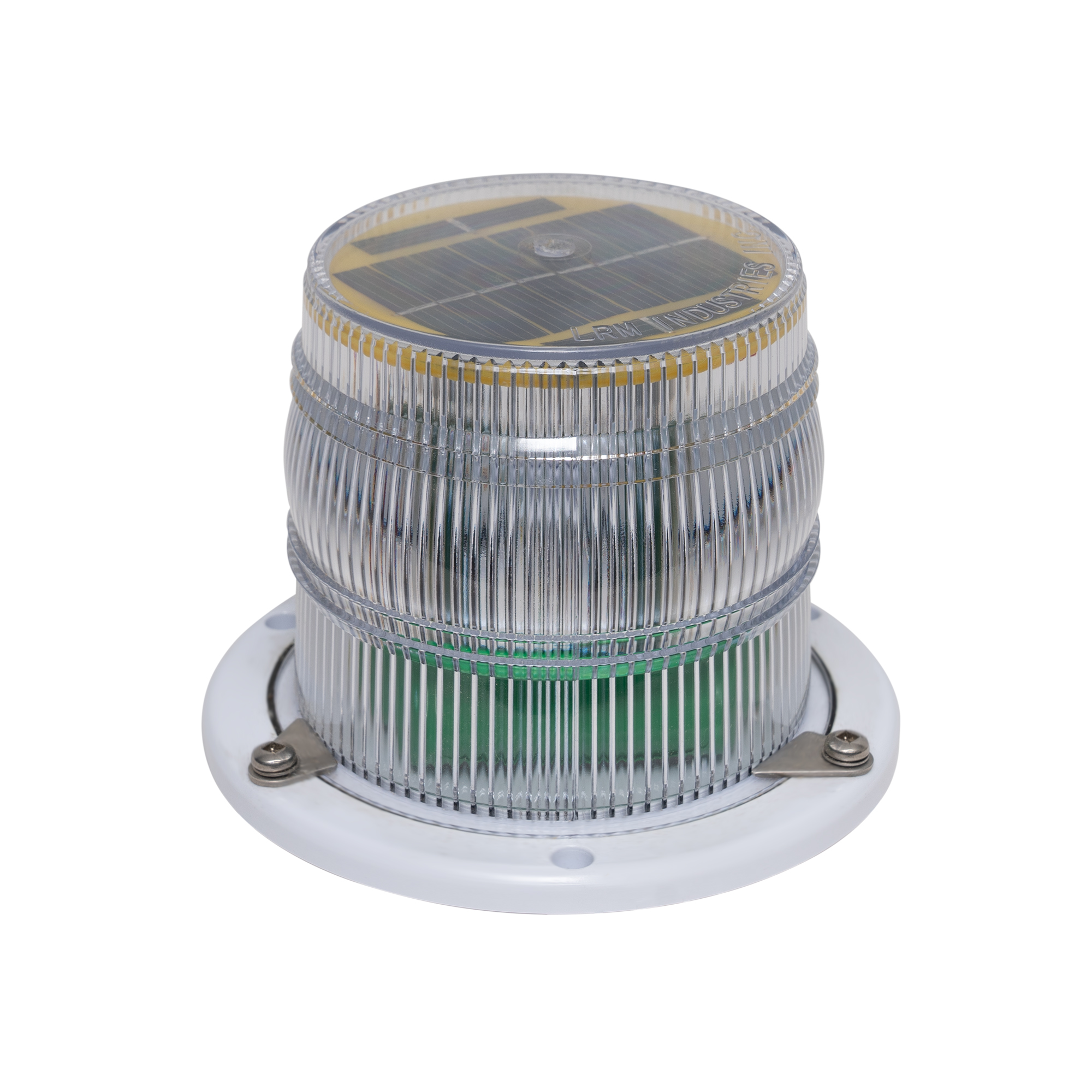
Buoy Anchors
Anchoring buoys in place is another consideration. In general, buoys should be connected to anchors with marine-grade cables or chains, as ropes are not a good option for long-term deployment. Anchor selection is another factor. Concrete anchors with loops for connection are a common choice. Augers can also be deployed depending on installation resources. Heavy pyramid anchors are another choice. The conditions on the bottom can impact the effectiveness of an anchor's ability to maintain a buoy in place. Extreme conditions can shift buoys from their original locations, so they should be regularly monitored and relocated as needed.
Concrete Buoy Anchor
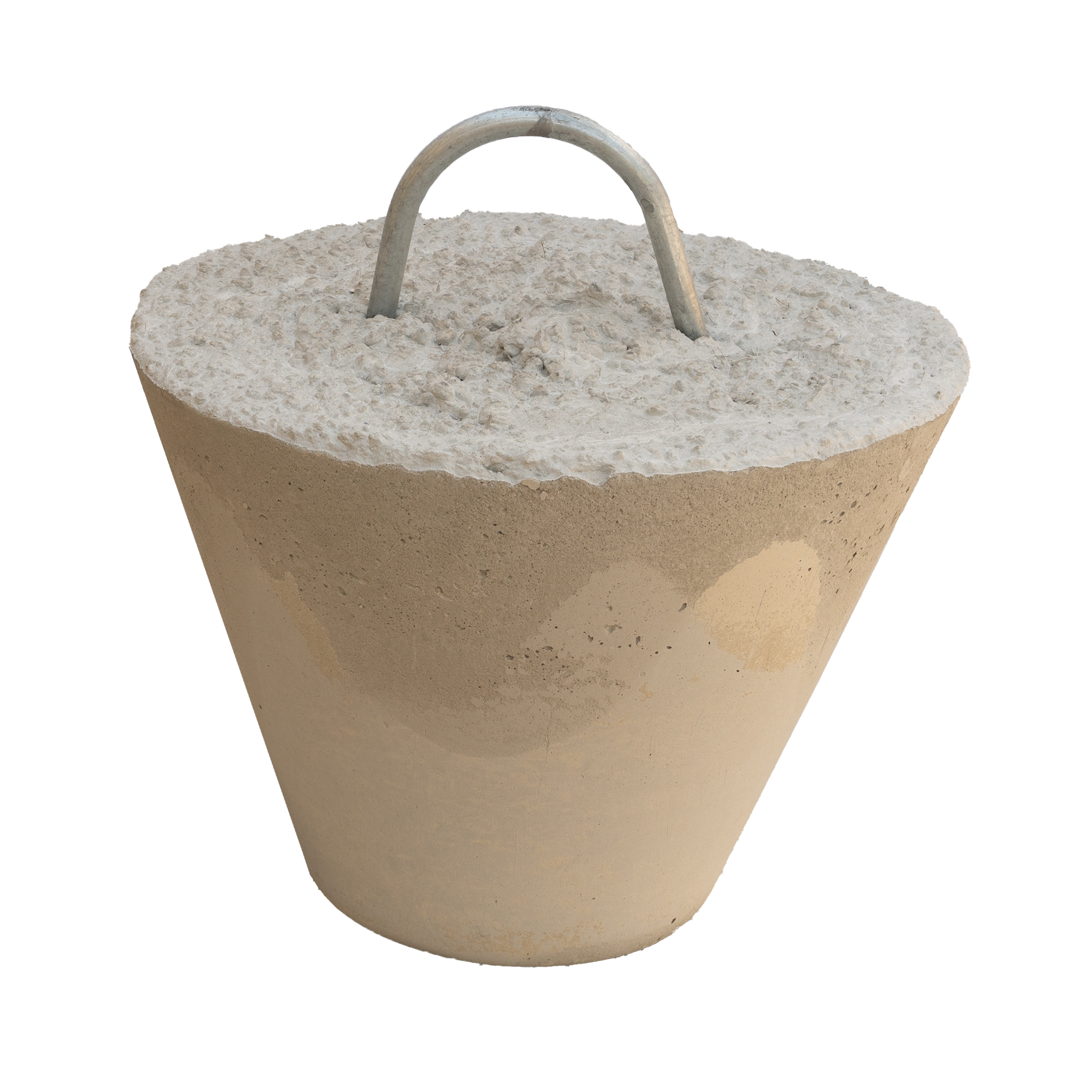
Where to Source Regulatory Buoys?
Trionic Corp is a reliable source for top-quality regulatory buoys, channel markers, mooring buoys, barrier floats, and a wide range of buoy accessories. The team at Trionic Corp is eager to consult with you on your needs and put together a comprehensive solution to fully meet your buoy needs. Call (262) 268-9240 to speak with one of our knowledgeable staff to get specifications, pricing, and lead times for any project.
Trionic Corp Products
Trionic Corp manufactures a wide range of marine and RV products. For marinas and docks, dock boxes, dock carts, dock boarding steps, trash cans, buoys, channel markers, and barriers floats are offered. Trionic also offers spill kits, spill containment boom, sorbents, and solar lighting. or boats and RVs, Trionic Corp has over 70 different sized water tanks and holding tanks, shower sump tanks, premium holding tanks, tank hose fittings, tank level monitors, vent filters, and tank pump out tubes. Trionic Corp's quality and service set us apart from the competition. Our products are built for Marina Life!
Mailing Address:
P.O. Box 324
Port Washington,
WI 53074
Physical Address:
222 E. Main St. Suite 208
Port Washington,
WI 53074


